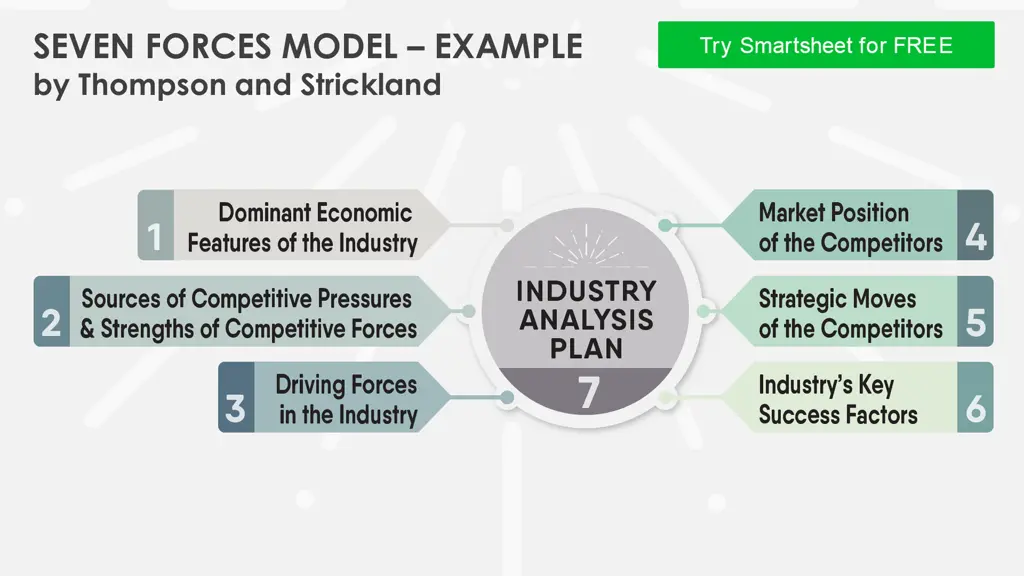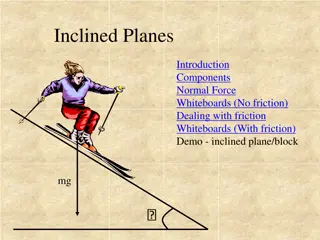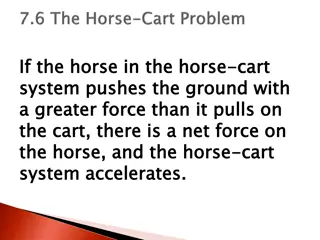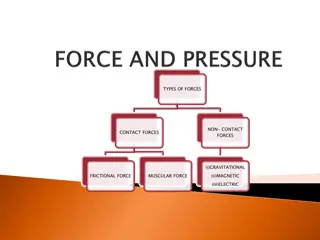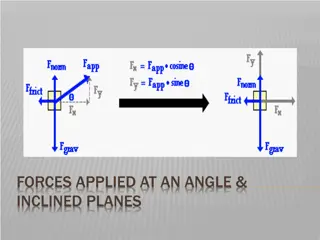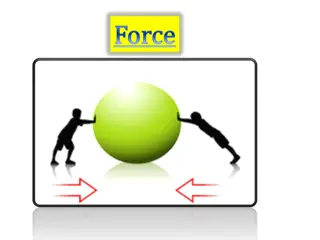Seven Forces Model - Example
The Seven Forces Model in the electronic vehicle industry, including technological innovation, government regulations, environmental concerns, and infrastructure development.
Download Presentation

Please find below an Image/Link to download the presentation.
The content on the website is provided AS IS for your information and personal use only. It may not be sold, licensed, or shared on other websites without obtaining consent from the author.If you encounter any issues during the download, it is possible that the publisher has removed the file from their server.
You are allowed to download the files provided on this website for personal or commercial use, subject to the condition that they are used lawfully. All files are the property of their respective owners.
The content on the website is provided AS IS for your information and personal use only. It may not be sold, licensed, or shared on other websites without obtaining consent from the author.
E N D
Presentation Transcript
SEVEN FORCES MODEL EXAMPLE by Thompson and Strickland
SEVEN FORCES MODEL by Thompson and Strickland EXAMPLE Rapid technological innovation, the influence of government regulations and incentives, growing environmental concerns driving demand, and the significance of infrastructure development for charging networks. Dominant Economic Features of the Industry 1 Sources of competitive pressures from established electronic vehicle (EV) automakers and new entrants, the bargaining power of suppliers for critical components like batteries, the bargaining power of consumers driven by factors such as price and range, the threat of substitute transportation options, and the strength of government policies and incentives promoting sustainable mobility. Sources of Competitive Pressures and Strengths of Competitive Forces 2
SEVEN FORCES MODEL by Thompson and Strickland EXAMPLE The driving forces in the electronic vehicle industry include advancements in battery technology, increasing environmental consciousness and government regulations promoting sustainable transportation, growing consumer demand for eco-friendly vehicles, and investments in charging infrastructure to support widespread adoption. Driving Forces in the Industry 3 The market position of competitors in the EV industry varies, with established automakers like Tesla and major traditional manufacturers holding significant market shares, while new entrants and tech companies are striving to gain traction and challenge the dominance of established players. Market Position of the Competitors 4
SEVEN FORCES MODEL by Thompson and Strickland EXAMPLE Competitors in the EV industry are strategically focusing on expanding their electric vehicle portfolios, investing in research and development for advanced battery technologies, forming strategic partnerships for charging infrastructure development, and increasing global market penetration through aggressive marketing and distribution strategies. Strategic Moves of the Competitors 5 The EV industry's key success factors include continuous technological innovation for longer driving range and faster charging times, efficient supply chain management for securing critical resources, effective marketing strategies to address consumer concerns and promote eco-friendly benefits, and strong collaborations with governments and utilities to develop charging infrastructure and secure regulatory support. Industry s Key Success Factors 6
SEVEN FORCES MODEL by Thompson and Strickland EXAMPLE The industry analysis plan for the EV sector involves conducting a comprehensive examination of market trends, competitive landscape, regulatory environment, technological advancements, consumer preferences, supply chain dynamics, and key success factors to gain insights into the industry's current status and future prospects. Industry Analysis Plan 7
DISCLAIMER Any articles, templates, or information provided by Smartsheet on the website are for reference only. While we strive to keep the information up to date and correct, we make no representations or warranties of any kind, express or implied, about the completeness, accuracy, reliability, suitability, or availability with respect to the website or the information, articles, templates, or related graphics contained on the website. Any reliance you place on such information is therefore strictly at your own risk.
